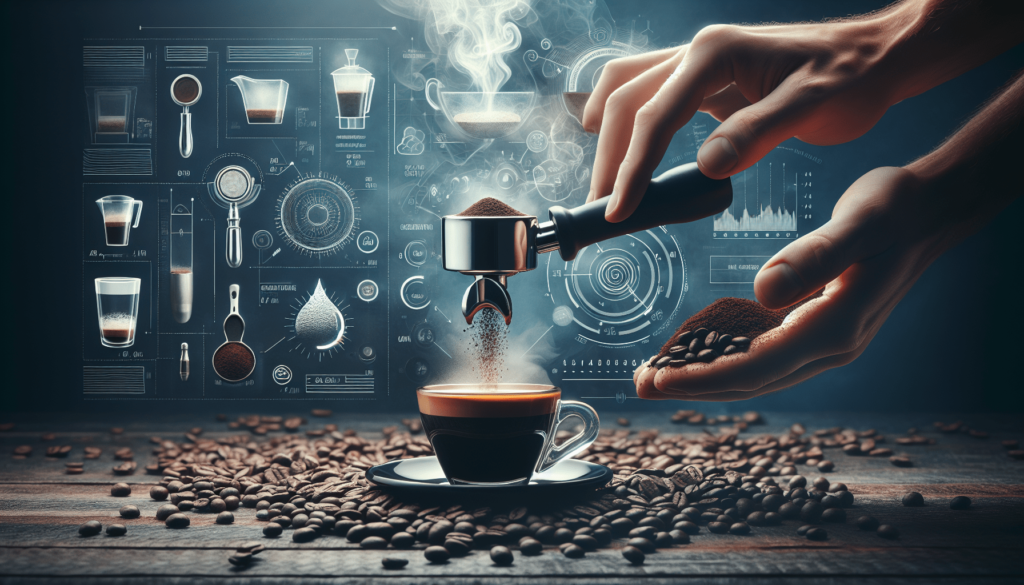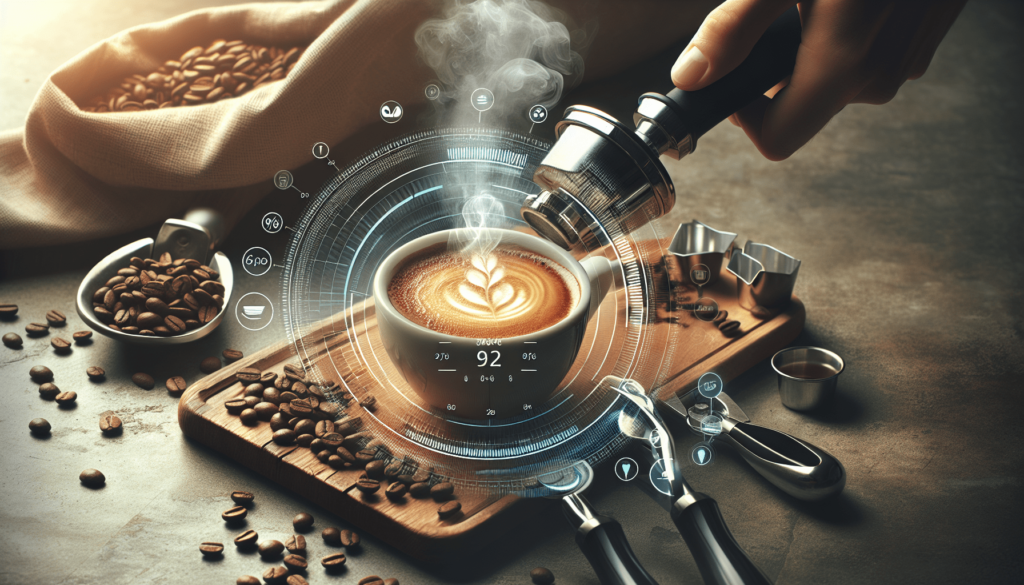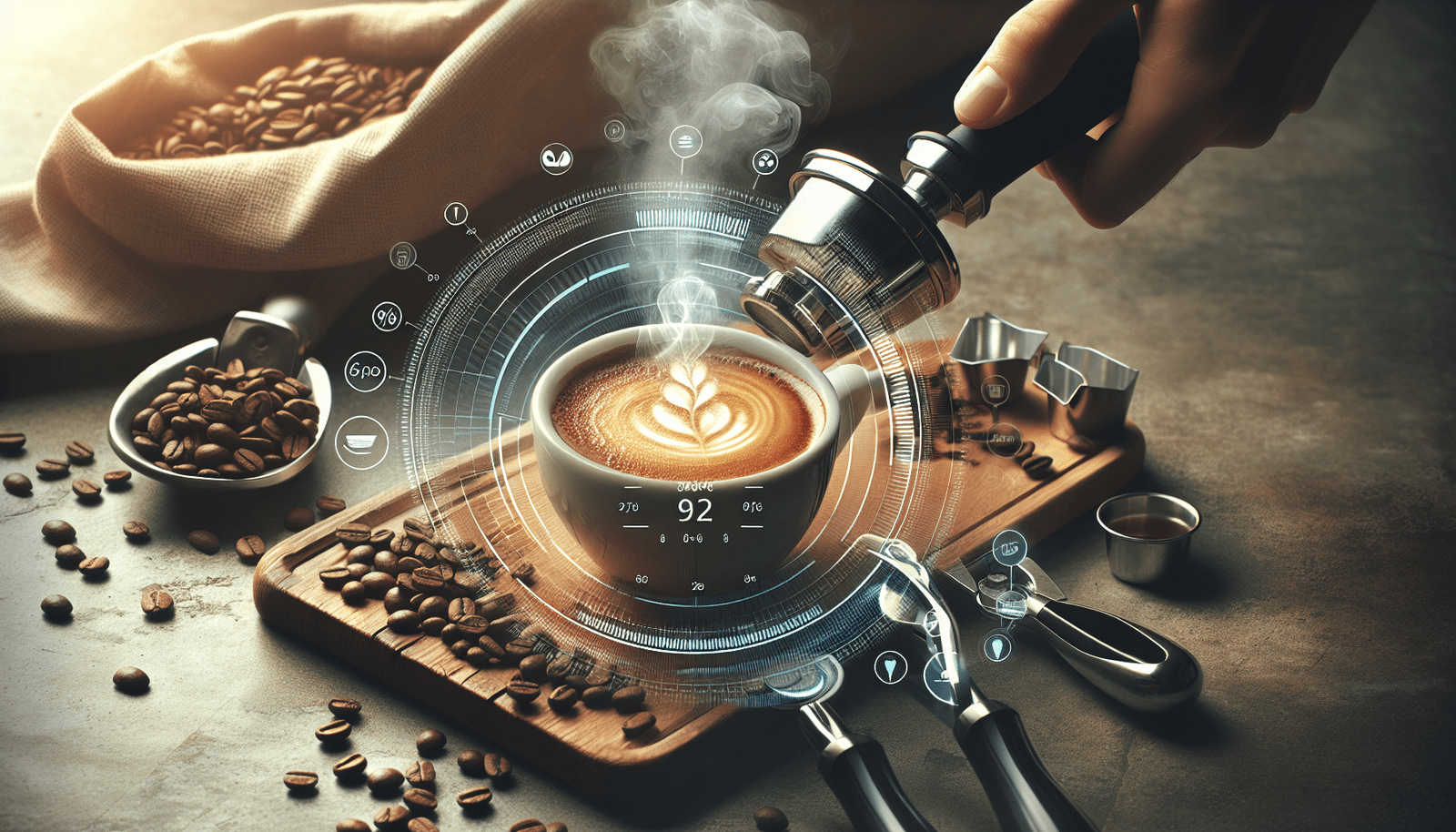Are you a coffee enthusiast looking to achieve that perfect cup of espresso made from fresh beans? If so, then you’re in luck! In this article, we will explore the ideal brewing ratios that will help you achieve the best results. From the perfect combination of coffee and water to the precise measurements, we will guide you step by step, ensuring that your next espresso brewing session is a success. Get ready to elevate your coffee game and experience the true flavors of freshly brewed espresso!
Understanding Brewing Ratios
What is a brewing ratio?
A brewing ratio refers to the proportion of coffee to water used in the brewing process. It is the measurement that determines the strength and flavor of the resulting espresso or coffee. The brewing ratio is typically represented as a numerical value, where the first number represents the amount of coffee and the second number represents the amount of water.
Why is the brewing ratio important?
The brewing ratio plays a crucial role in determining the taste and quality of your espresso. It ensures that the coffee is brewed to its optimal strength and extractive potential. By using the right brewing ratio, you can achieve a well-balanced cup of espresso with the desired flavor characteristics.
Factors influencing the brewing ratio
Several factors come into play when determining the ideal brewing ratio. These factors include the type of coffee beans used, the roast level, grind size, extraction time, water quality, and temperature. Understanding how these factors affect the brewing process will help you choose the appropriate brewing ratio for your espresso.
Choosing the Right Coffee-to-Water Ratio
What is a coffee-to-water ratio?
The coffee-to-water ratio is the specific brewing ratio used to prepare espresso. It refers to the amount of coffee grounds used in relation to the volume of water. The ratio is typically expressed in grams or ounces of coffee per milliliter or fluid ounce of water.
Classic espresso brewing ratio
The classic espresso brewing ratio is often referred to as the “Golden Ratio.” It recommends a coffee-to-water ratio of 1:2. This means using 18 grams of coffee for every 36 milliliters of water. This ratio typically results in a balanced espresso with a rich flavor and good extraction.
Various espresso brewing ratios
While the classic espresso brewing ratio is widely used, there are variations that can be explored to suit personal preferences. Some coffee enthusiasts prefer a stronger espresso and may opt for a higher coffee-to-water ratio, such as 1:1.5. Others may prefer a milder taste and choose a lower ratio, such as 1:2.5. It’s important to experiment with different ratios to find the one that best suits your taste.

Factors Affecting the Brewing Ratio
Bean freshness and roast level
The freshness and roast level of the coffee beans can significantly impact the brewing ratio. Freshly roasted beans tend to release more flavors and require a higher coffee-to-water ratio to achieve a well-balanced cup of espresso. On the other hand, darker roasted beans are more soluble and may need a slightly lower ratio to avoid an overly bitter taste.
Grind size and consistency
The grind size and consistency are critical factors in determining the brewing ratio. Finely ground coffee requires less water to extract the desired flavors, while coarsely ground coffee needs more water. It is important to adjust the brewing ratio according to the grind size to achieve the optimal extraction and prevent under or over-extraction.
Pressure and extraction time
The pressure and extraction time during the brewing process also influence the brewing ratio. Different pressures and extraction times can affect the rate at which flavors are extracted from the coffee grounds. Adjusting the brewing ratio can help compensate for variations in pressure and extraction time, ensuring a well-balanced and flavorful espresso.
Water quality and temperature
Water quality and temperature have a significant impact on the brewing ratio. Hard water with high mineral content may affect the extraction process, requiring a different brewing ratio compared to soft water. Additionally, water temperature can affect how efficiently the coffee extracts. It is important to consider these factors and adjust the brewing ratio accordingly to achieve the desired taste.
Experimenting with Bean Freshness
Impact of fresh beans on taste
Using fresh beans significantly enhances the flavor profile of your espresso. Freshly roasted beans have higher levels of aromatic compounds and oils, resulting in a more vibrant and complex taste. The brewing ratio for fresh beans should be adjusted to accommodate their higher extractive potential and intense flavors.
Ideal brewing ratio for freshly roasted beans
For freshly roasted beans, a coffee-to-water ratio of 1:2.5 is often recommended. This higher ratio allows for a more thorough extraction, ensuring that you capture all the flavors and nuances present in the beans. Adjusting the brewing ratio to be slightly higher than usual can result in a well-balanced and flavorful cup of espresso.
Adjusting brewing ratio for beans with different roast levels
Roast level plays a crucial role in the brewing ratio, and it is important to adjust accordingly. For darker roasted beans, which are more soluble, a slightly lower brewing ratio may be suitable to prevent over-extraction and bitterness. Lighter roasted beans, on the other hand, may require a slightly higher brewing ratio to ensure optimal extraction and full-bodied flavors.

Discovering the Right Grind Size
Effect of grind size on extraction
Grind size is a critical factor in determining the brewing ratio. Finer grounds extract faster, while coarser grounds require more time and water for extraction. Adjusting the brewing ratio based on the grind size allows you to control the extraction process and achieve a balanced cup of espresso.
Finding the optimal brewing ratio with different grind sizes
With a finer grind size, a lower brewing ratio may be necessary to prevent over-extraction and achieve a balanced flavor. Conversely, with a coarser grind size, a slightly higher brewing ratio can compensate for the slower extraction and ensure a proper flavor profile. Experimenting with different grind sizes and corresponding brewing ratios will help you discover the optimal balance.
Adjusting brewing ratio based on grind consistency
Consistency in grind size is equally important when determining the brewing ratio. Inconsistent grind sizes can lead to uneven extraction, resulting in a cup of espresso with varying flavors and strengths. Adjusting the brewing ratio based on the grind consistency helps to ensure a consistent extraction and a well-rounded taste.
Understanding Pressure and Extraction Time
Impacts of pressure and extraction time on flavor
Pressure and extraction time greatly influence the extraction process and, consequently, the flavor of the espresso. Higher pressure and longer extraction times can lead to more intense and robust flavors, while lower pressure and shorter extraction times may result in a milder taste. Adjusting the brewing ratio according to the desired pressure and extraction time will help you achieve the desired flavor profile.
Choosing the appropriate brewing ratio for different pressures
The brewing ratio should be adjusted depending on the pressure used during the extraction process. Higher pressures often require a lower brewing ratio to prevent over-extraction. Conversely, lower pressures may require a higher brewing ratio to ensure an adequate extraction. Understanding the relationship between pressure and brewing ratio allows you to fine-tune the flavor intensity of your espresso.
Adjusting brewing ratio based on extraction time
The extraction time also impacts the brewing ratio. Longer extraction times require a higher brewing ratio to extract the desired flavors fully. Conversely, shorter extraction times may necessitate a lower brewing ratio to avoid over-extraction. Experimenting with different extraction times and corresponding brewing ratios allows you to find the perfect balance and achieve your desired taste.
The Role of Water Quality and Temperature
Importance of water quality
Water quality is often overlooked but plays a significant role in the brewing process. The mineral content and pH level of the water can affect the extraction and overall taste of the espresso. Hard water, for example, requires a different brewing ratio compared to soft water. It is important to consider the quality of the water and adjust the brewing ratio accordingly to achieve the best results.
Ideal brewing ratios for different water types
For soft water, a brewing ratio of 1:2 is often recommended. The lower mineral content allows for a more efficient extraction, requiring less coffee to achieve a balanced flavor. On the other hand, hard water with a higher mineral content may necessitate a higher brewing ratio, such as 1:2.5, to compensate for the reduced extraction efficiency caused by the minerals.
Effect of water temperature on brewing ratio
Water temperature is another crucial factor affecting the brewing ratio. The ideal water temperature for extracting flavors from coffee ranges between 195°F (90°C) and 205°F (96°C). Lower temperatures may result in under-extraction, while higher temperatures can lead to over-extraction. Adjusting the brewing ratio based on water temperature ensures that the flavors are properly extracted without any undesirable tastes.
Adjusting Brewing Ratios for Personal Preference
Exploring different flavor profiles
Everyone has different preferences when it comes to the taste of espresso. By adjusting the brewing ratio, you can explore a wide range of flavor profiles. Experiment with different ratios to achieve varying strengths, flavors, and nuances. Some may prefer a bolder and stronger espresso, while others may prefer a milder and more subtle taste. Adjusting the brewing ratio allows you to tailor the flavor profile to your liking.
Adapting the brewing ratio to achieve desired taste
The brewing ratio is a powerful tool that allows you to adapt the taste of your espresso. By adjusting the ratio, you can enhance certain flavor characteristics or tone down others. If you want a more pronounced acidity or a richer body, you can experiment with different brewing ratios to achieve your desired taste. The ability to adapt the brewing ratio empowers you to create a truly customized cup of espresso.
Considering the strength and body of the espresso
The brewing ratio is closely tied to the strength and body of the espresso. A higher brewing ratio will result in a stronger and more robust espresso, while a lower ratio will produce a milder cup. Additionally, the body of the espresso can be influenced by adjusting the brewing ratio. A higher ratio can create a fuller and more viscous mouthfeel, while a lower ratio may result in a lighter and smoother texture. Consider your preference for strength and body when determining the brewing ratio that suits you best.
Common Brewing Ratio Mistakes to Avoid
Over-extraction and under-extraction
Using the wrong brewing ratio can lead to over-extraction or under-extraction of the coffee grounds. Over-extraction occurs when too much water is used with a small amount of coffee, resulting in a bitter and unbalanced taste. Under-extraction, on the other hand, happens when too little water is used, leading to a weak and sour flavor. It is crucial to find the right brewing ratio to avoid these common mistakes and achieve a well-extracted cup of espresso.
Using the wrong coffee-to-water ratio
One of the most common mistakes in brewing is using the wrong coffee-to-water ratio. Using too much or too little coffee in relation to the water can significantly impact the taste. It is important to measure the coffee and water accurately to ensure the desired strength and flavor. Adjusting the brewing ratio based on personal preferences and the factors discussed earlier will help you avoid using the wrong coffee-to-water ratio.
Neglecting other factors while focusing solely on ratio
While the brewing ratio is vital for a good cup of espresso, it is essential not to overlook other factors that affect the brewing process. Factors such as bean freshness, grind size, pressure, extraction time, and water quality also play a significant role in determining the taste and quality of the espresso. Neglecting these factors while solely focusing on the brewing ratio may lead to subpar results. It is crucial to consider the brewing ratio in conjunction with these other factors to achieve the perfect balance.
Finding the Perfect Balance
Fine-tuning the brewing ratio
Finding the perfect brewing ratio requires experimentation and fine-tuning. Start with the classic espresso brewing ratio of 1:2 and then make adjustments based on your preferences and the factors discussed earlier. Document your results and the changes you make to the brewing ratio to keep track of the flavors you achieve. Refine the brewing ratio by gradually altering it until you find the perfect balance that suits your taste.
Experimenting and documenting results
Experimentation is key to discovering the ideal brewing ratio. Try different combinations of brewing ratios, grind sizes, extraction times, and water temperatures. Document the results and the flavors achieved with each variation. By documenting your findings, you can understand how changes in the brewing ratio affect the taste and make adjustments accordingly.
Considering individual preferences and equipment
Remember that individual preferences vary, and what works for one person may not work for another. Consider your personal taste preferences and the specific equipment you use when determining the brewing ratio. Each espresso machine and grinder may have slight variations in extraction, so it is crucial to take those factors into account. Adjust the brewing ratio accordingly to achieve the desired taste with your specific equipment.
In conclusion, understanding brewing ratios and their significance in the espresso-making process is essential for achieving your desired cup of coffee. By considering factors such as bean freshness, roast level, grind size, pressure, extraction time, water quality, and temperature, you can adjust the brewing ratio to suit your taste preferences. Experimentation, documentation, and fine-tuning will ultimately lead you to the perfect balance and a customized cup of espresso tailored to your liking. Cheers to brewing the perfect espresso!

